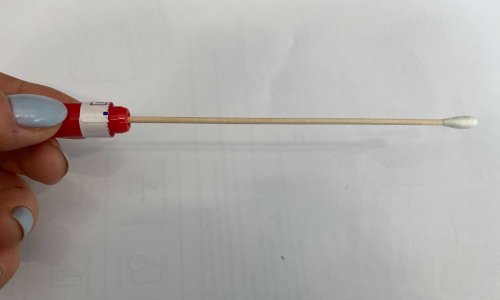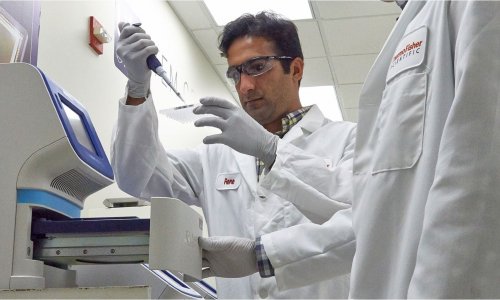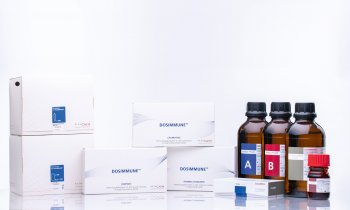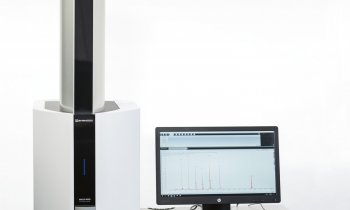Interview • Status quo and recent developments
What's new in liquid chromatography-mass spectrometry?
European Hospital has recently focused on the development of liquid chromatography-mass spectrometry (LC-MS) for use in analytical/medical diagnostics. Dr Stavros Kromidas, an expert in high-performance liquid chromatography (HPLC) and author of several specialist books, has published his latest book ‘The HPLC-MS Handbook for Practitioners’. We interviewed him about this and a new technique that enables MS analysis to be used live in the operating room (OR).
Interview: Walter Depner
In your previous HPLC publications you described the theoretical principles in concise but sufficient and easily comprehensive terms, intending the works for the practical user. The title of your new publication – for the first time dealing with chromatographic and spectroscopic methods – suggests the same focus. If this is the case, to whom is it addressed?
‘Indeed, practical aspects take centre stage. While we do explain the background of the individual LC-MS modes, we tried to present more tips and recommendations for everyday use. The book is geared towards users in the lab and their managers, to the extent that the latter are interested in practical issues.’
For decades, coupled LC-MS systems have primarily been used in life sciences and environment testing. When has this method started to enter the realm of healthcare?
In a research setting, the technique is gaining ground since the boundaries between biochemistry, diagnostics and toxicology are increasingly blurred
Stavros Kromidas
‘You have to clearly define what you are looking at: mass spectrometry has long been used in healthcare; a recent example is the so-called Rapid Evaporative Ionisation Mass Spectrometry, REIMS for short. This technique allows us to recognise malignant tissue in real-time during surgery. An MS probe is attached to the scalpel with which the surgeon removes suspicious tissue. The hand-piece continuously collects mass spectra, which are analysed by a software package and the results – malignant cells or benign cells – are immediately reported back to the surgeon. This technique is apparently as reliable as the conventional, but much more time-consuming, histological analysis. In a lab performing clinical routine tests, however, LC-MS is rarely used, because the relevant values can be identified with simpler methods. In a research setting, by contrast, the technique is gaining ground since the boundaries between biochemistry, diagnostics and toxicology are increasingly blurred; case in point: OMICs technologies, monoclonal antibodies and biomarkers.’
Apart from the field of applications, many aspects are relevant for all users. To what extent have spatial, equipment and staff requirements for LC-MS use changed?

‘LC-MS coupling has been done for 20 to 25 years and has taken off in the last seven to ten years. Thus the method can safely be called mature and well established. Spatial requirements are negligible since the equipment is rather compact. Nevertheless, two distinct trends can be observed: on the one hand there are simple, small and robust instruments for routine tasks where the target analytics are known. In these cases the users do not need special skills. On the other hand, you’ve got high-end equipment for non-target analytics. To be able to use the technology efficiently, the users need in-depth knowledge. Fortunately there are ever more new tools to assist users, such as online comparison with spectra libraries, the use of several and/or new interfaces and smart use of different data, e.g. retentions times from orthogonal separations, spectra or log-D values.’
A particular focus of your work is column technology and gradient optimisation. Do they significantly impact on coupling systems and if so what needs to be taken into account?
‘Indeed, in LC-MS coupling stable stationary phases are required that do not “bleed”. This is quite a challenge in the frequently required polar stationary phases. The manufacturers are busy addressing the issue, and phases with an additional positive load were introduced recently. Concerning the gradient, the principle naturally stays the same, but there are specific characteristics. These aspects are dealt with in a new book due out soon.’*
Time and money play crucial roles in obtaining results in analytics. How would you rate the significance of these two factors?
There are always quick and cheap ways to find what you’re looking for, but you don’t always know how reliable the results are
Stavros Kromidas
‘Just like in real life these two factors are interdependent: The more time – which is ultimately money – you invest, for example by using different ionisation techniques, the more reliable the results and their interpretation. There are always quick and cheap ways to find what you’re looking for, but you don’t always know how reliable the results are.’
* ‘The Gradient in HPLC for Practitioners’ by Stavros Kromidas, is due to be released soon by Wiley.
Profile:
Born in Thessaloniki, Greece, Dr Stavros Kromidas wrote his chemistry dissertation ‘The Development of new chiral phases in HPLC’ supervised by Heinz Engelhardt, Professor of Instrumental Chemistry and Environment Testing, at Saarland University, Germany. Following a management job with Waters GmbH, in 1989 Kromidas founded Novia GmbH. Since 2001 he has been a consultant and author of specialist books on High-performance liquid chromatography (HPLC) and validation. He focuses on the comparison and selection of stationary phases and gradient optimisation, as well as the use of state-of-the-art HPLC and Ultra-high performance liquid chromatography (UHPLC).
30.05.2018











